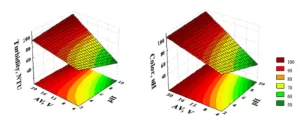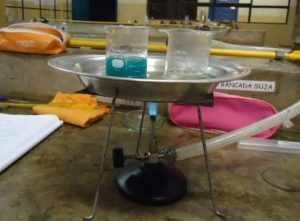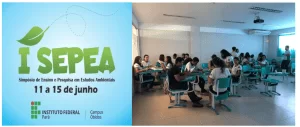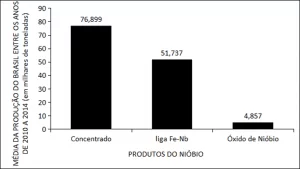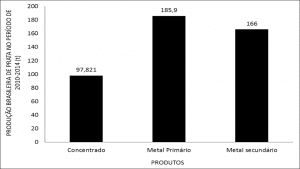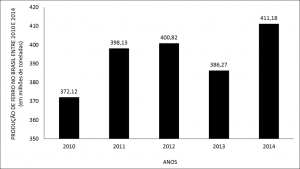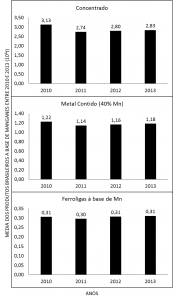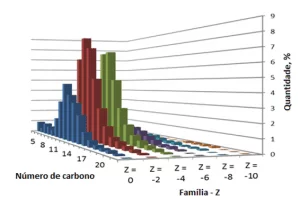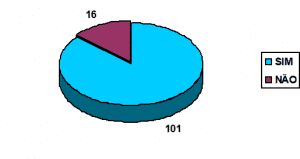BARROS, Yara Lorrane Souza [1], ARAÚJO, Franciolli da Silva Dantas [2], FECURY, Amanda Alves [3], OLIVEIRA, Euzébio [4], DENDASCK, Carla Viana [5], DIAS, Claudio Alberto Gellis de Mattos [6]
BARROS, Yara Lorrane Souza. Et al. Brazilian tungsten panorama (w) between 2008 and 2014. Revista Científica Multidisciplinar Núcleo do Conhecimento. Year 03, Ed. 09, Vol. 08, pp. 22-29 September 2018. ISSN:2448-0959, Access link: https://www.nucleodoconhecimento.com.br/quimica-en/tungsten, DOI: 10.32749/nucleodoconhecimento.com.br/quimica-en/tungsten
SUMMARY
Minerals are natural chemicals, which have an ordered internal structure, and certain constant characteristics that allow them to be identified as mineral. Tungsten (W) is a chemical substance that has a melting point of 3,419°C, and a specific weight of 19.3g/cm3… There are about 20 minerals that contain tungsten in its chemical composition, with scheelite and volframite being the main ones. The data were taken from the National Department of Mineral Production – DNPM (http://www.dnpm.gov.br/). The data was compiled within the Excel application, a component of the Microsoft Corporation Office suite. The bibliographic research was carried out in scientific articles found in the worldwide computer network. Data show that between 2008 and 2010 there was a decline in tungsten production in the form of contained mineral and concentrate. From 2011 on, production grew. Brazil exported almost four times what it imported from tungsten in the researchperiod. Between 2008 and 2012 there was an increase in the apparent consumption of tungsten. In 2013 and 2014 there was a sharp drop in relation to other years. The Brazilian tungsten picture showed difficulties, but continued to grow, bringing research that can improve the consumption and production of raw materials in the national territory.
Keywords: Tungsten, Production, Consumption, Trade.
INTRODUCTION
Minerals are natural chemicals, which have an orderly internal structure, and certain constant characteristics that allow their identification as mineral. Characteristics such as: chemical composition and own physical properties. Ore is the term used to refer to one or more minerals, with economic and technological viability (BRASIL, 2016; NORONHA, 2017).
The concentration of minerals of economic interest in the earth’s crust is called a mineral resource. It presents reasonable conditions for economic extraction. The mineral resource has location, content, quantity, geological characteristics and other known or estimated characteristics. The economically washable part of the mineral resource is designated as a mineral reserve (BRASIL, 2016).
Tungsten (W) is a chemical substance that has a melting point of 3,419°C, and a specific weight of 19.3g/cm3… There are about 20 minerals that contain tungsten in its chemical composition, with scheelite and volframite being the main ones. Metallized tungsten has high hardness, wear and corrosion resistance, resistance to high temperatures and is a good conductor of heat and energy (CANO et al., 2009). This is a steel gray ore, belonging to group 6 of the periodic table, in the 3rd row. It has the highest melting point of metals, boiling point equal to 5555 °C and specific weight equal to 19.3 g/m3. There are about 20 tungsten minerals, with scheelite and volframite being the main ones. The first commercial use of tungstenite was in additives to harden steels in 1868 (PAULINO and AFONSO, 2013).
Tungsten can be marketed in three ways: concentrate, intermediate product, and final product. Among the intermediate products, some ferrotungsten and chemical compounds stood out. Among the final products derived from the tungsten processing industry, there is metallic tungsten, special steels, non-ferrous alloys, among others (CANO et al., 2009).
Goal
Present the tungsten framework in national trade, and can serve as a basis for companies and researchers to understand the Brazilian tungsten market. The objective of this work is to show the Brazilian panorama of tungsten (W) between 2010 and 2014, and national between 2008 and 2014.
Method
The data were taken from the National Department of Mineral Production – DNPM (http://www.dnpm.gov.br/). On the home page, in the topic “Collection”, the “Publications” tab was selected. Clicked on the “Statistics and Mineral Economy” option icon. The “Mineral Summary” icon has been selected on the new page that opened. The summaries from 2010 to 2014 were downloaded in PDF and data on tin were collected from the tables “Reserves and world production” and “Main statistics – Brazil”. The data was compiled within the Excel application, a component of the Microsoft Corporation Office suite. The bibliographic research was carried out in scientific articles found in the worldwide computer network, made in machines of the computer laboratory of the Federal Institute of Education, Science and Technology of Amapá, Macapá Campus, located at Highway BR 210 KM 3, s/n – Bairro Brasil Novo. ZIP Code: 68.909-398, Macapá, Amapá, Brazil. The data was organized in the Excel application, a component of the Microsoft Corporation Office suite.
Results
Figure 1 shows data on the production of tungsten in the form of a mineral contained in Brazil between 2008 and 2014 (t). Data show that between 2008 and 2010 there was a decline in tungsten production in the form of mineral contained. From 2011 on, production grew.
Figure 1: Production of tungsten in mineral form contained in Brazil between 2008 and 2014 (t).
Figure 2 shows data on the production of concentrated mineral tungsten in Brazil between 2008 and 2014 (t). Data show that between 2008 and 2010 there was a decline in the production of concentrated mineral tungsten. From 2011 on, production grew.
Figure 2: Production of concentrated mineral-shaped tungsten in Brazil between 2008 and 2014 (t).
Figure 3 shows the data on tungsten import and export in Brazil between 2008 and 2014 (t). The data show that Brazil exported almost four times what it imported from tungsten in the period surveyed.
Figure 3: Import and export of tungsten in Brazil between 2008 and 2014 (t).
Figure 4 shows data on the average annual price of concentrated mineral-shaped tungsten between 2008 and 2014 (US$/MTU-CIF). The data shows that the price presented by US-Platts Metals Week was almost three times higher than the price presented by Europe-London Metal Bulletin.
Figure 4: Average annual average price of concentrated mineral-shaped tungsten between 2008 and 2014 (US$/MTU-CIF).
Figure 5 shows data on apparent consumption of concentrated mineral tungsten in Brazil between 2008 and 2014 (t). The data show that between 2008 and 2012 there was an increase in apparent consumption. In 2013 and 2014 there was a sharp drop in relation to other years.
Figure 5: Apparent consumption of concentrated mineral-shaped tungsten in Brazil between 2008 and 2014 (t).
Discussion
The significant drop in production between 2008 and 2010 may be a consequence of the low efficiency in tungsten recovery in low granulometry materials in Brazil. On the other hand, the increase from 2011 may have happened by increasing studies to recover the element in tailings, when contained in low content. Leaching methods, such as leaching with alkalis under pressure, for example, can serve to treat preconcentrates with an approximate content of 5% of chemical matter (FERNANDES and MACHADO, 2009). The Brejuí Mine of Mineração Tomaz Salustino had more than 3,000,000 tons of tailings added to its piles, which shows that the recovery potential exists (CARVALHO et al., 2002).
In relation to the world, Brazil’s tungsten reserves grew from 0.39% in 2005 to 1% in 2006. This growth promoted further studies to determine more appropriate treatments for the concentrate of this element. The results of these studies are possibly the cause of the increase in production from 2011 (PAULINO et al., 2012).
What probably caused the largest number of exports was the fact that Brazil did not produce metallic tungsten in the years surveyed. However, more than half of tungsten was transformed into metal alloys in 2012 for the production of incandescent bulbs and ballpoint pens. Thus, probably the alternative of industries to use it in this way was exporting the metal alloys (IBRAM, 2012; PAULINO et al., 2012; PAULINO and AFONSO, 2013).
The relationship between demand and supply, in economics, The Supply and Demand Act, may justify the price difference between THE USA-Platts Metals Week and the Europe-London Metal Bulletin. This law explains that when there is a large supply and little demand for a product, the tendency is for its price to fall; otherwise, the stabilization of these two factors generates stabilization in prices. The United States (USA) has the second largest tungsten reserve in the world, however, Europe imported more tungsten than the U.S., about 28% of world production. In addition, data from the OEC (2014) show that there was higher tungsten exports by Europe compared to the US. With this greater amount of tungsten in Europe, it becomes coherent the price suggested by its trade to be cheaper than the value determined by the American data provider (MIRANDA, 2012; NORONHA and GUEDES, 2014).
The rise of the national apparent consumption began in 1999 and this occurred because the production of the concentrate accompanied the demand of domestic consumption. However, the fall in consumption in 2013 and 2014 was probably the result of the need to import intermediate products for domestic consumption. In addition, there are still the consequences of the economic crisis that the country went through, where there was a decline in development and consequently affected the financial sector of industry and commerce, hindering the consumption of the element (CANO et al., 2009; CERVO and LESSA, 2014).
CONCLUSION
Tungsten is a metal that still needs more research to continue to increase its production and gain space in Brazilian mining. During the researchperiod, it was noted that, although the production of both concentrated and contained production increased annually, being affected by the lack of exploitation of strategic reserves or more pragmatic methods for the recovery of the metal when there is low content of the same. The crisis and the instability of world and national trade have affected metal consumption and prices both in Brazil and in the main stock exchanges of the world’s major economies. The Brazilian tungsten picture showed difficulties, but continued to grow, bringing research that can improve the consumption and production of raw materials in the national territory.
REFERENCES
BRASIL. Glossário Geológico Ilustrado. 2016. Disponível em: < http://sigep.cprm.gov.br/glossario/index.html >. Acesso em: 27 de novembro, 2017.
CANO, T. M.; COSTA, J. L.; NESI, J. R. Tungstênio. Brasília: Departamento Nacional da Produção Mineral DNPM 2009.
CARVALHO, E. B. et al. Caracterização de rejeitos provenientes da usina de beneficiamento do minério da Mina Brejuí/RN. XIX Encontro Nacional de Tratamento de Minérios e Metalurgia Extrativa. Recife PE. 1 2002.
CERVO, A. L.; LESSA, A. C. The fall: the international insertion of Brazil (2011-2014). Revista Brasileira de Política Internacional, v. 57, n. 2, p. 133-151, 2014.
FERNANDES, B. B.; MACHADO, A. O. Lixiviação de Scheelita – Uma Revisão do Estado da Arte. IV Congresso de Pesquisa e Inovação da Rede Norte Nordeste de Educação Tecnológica (). Leite, J. Y. (2009). . , Belém-PA: CONNEPI 2009.
IBRAM. Você Sabe para Que Serve o Tungstênio? , 2012. Disponível em: < http://www.ibram.org.br/150/15001002.asp?ttCD_CHAVE=174627 >. Acesso em: 18 de agosto de 2018.
MIRANDA, M. B. A Lei da Oferta e da Procura e os Preços dos Produtos e Serviços. Rev. Virtual Direito Brasil, v. 6, n. 1, p. 1-2, 2012.
NORONHA, F. Minério. Rev. Ciência Elem, v. 5, n. 2, p. 18, 2017.
NORONHA, F., LIMA, A.,; GUEDES, A. Potencialidades de Portugal em minerais críticos. Geologia e Sustentabilidade, v. 2, 2014.
PAULINO, J. F.; AFONSO, J. C. Elemento Químico: Tungstênio. Química Nova na Escol, v. 35, n. 02, p. 141-142, 2013.
PAULINO, J. F. et al. Isolamento do Tungsténio da Volframita da Mina de Igarapé Manteiga (Rondônia-Brasil) por Lixiviação Ácida. Quim. Nova, v. 35, n. 9, p. 1854-1857, 2012.
[1]High school student. Technical Course in Mining. Federal Institute of Basic, Technical and Technological Education of Amapá (IFAP).
[2] Materials Technologist. Master in Materials Science and Engineering. Researcher Professor, Federal Institute of Basic, Technical and Technological Education of Amapá (IFAP)
[3]
Biomedical. PhD in Tropical Diseases. Researcher Professor, Federal University of Amapá (UNIFAP).[3] Biologist. Doctor of Tropical Diseases. Researcher Professor at the Federal University of Pará (UFPA).
[4] Biologist. Doctor of Tropical Diseases. Researcher Professor at the Federal University of Pará (UFPA).
[5] Theologian. PhD in Clinical Psychoanalysis. Researcher at the Center for Research and Advanced Studies, São Paulo, SP.
[6] Biologist. PhD in Theory and Behavior Research. Researcher Professor, Federal Institute of Basic, Technical and Technological Education of Amapá (IFAP)






